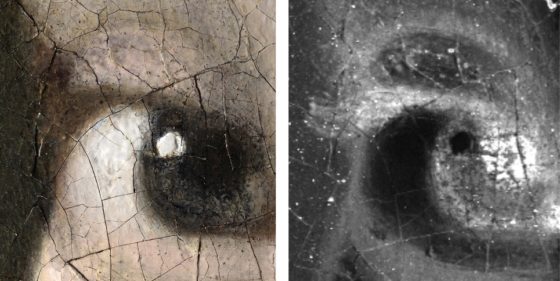Vermeer’s Girl with the Pearl Earring had eyelashes: research


The Mauritshuis in The Hague has revealed the results of a comprehensive research project carried out in 2018 into Johannes Vermeer’s Girl with the Pearl Earring, showing among other things, that the girl has eye lashes.
The research project, The Girl in the Spotlight, is a joint effort by the Mauritshuis, Delft University, Shell’s technology centre in Amsterdam and a host of prestigious museums. It has not brought the identity of the girl in the painting any nearer but has provided new insights into the painter’s way of working.
The international team of experts used special imaging and scanning techniques to explore Vermeer’s brushstrokes, his use of pigments and the way in which he built up the layers of paint, the museum said.
Curtain
A surprising new find was that the background of the painting was not the empty dark space it is now. Diagonals and differences in colour point to what was originally a green pleated curtain which was depleted of colour over the centuries.
Macro-X-ray fluorescence scanning and microscopic examination also showed that the girl, whose eyes appear to be bare, used to have eyelashes. Some small hairs remain but most of her lashes too have disappeared with time.
Researchers also found that Vermeer based his painting on boldly executed brushstrokes of browns and blacks. They also discovered various changes Vermeer made to the composition as he worked, such as the position of the girl’s ear and the upper part of her scarf. The paint he used to sign his name was found to contain some fine hairs from his brush.
Ultramarine
The composition and range of the pigments Vermeer used were comprehensively explored as well. His predilection for high-quality ultramarine, used extensively in the head scarf and coat, show he did not stint on the pigments he wanted.
Ultramarine is made from the semi-precious lapis lazuli, which was more valuable than gold at the time. The researchers also found that the stone may have been heated to a high temperature, which would have made it easier to process and result in a more intense blue. Vermeer also selected two particular types of lead white to render the translucency of the girl’s skin.
‘The project has brought us closer to Vermeer and the Girl than ever before, project leader Abbie Vandivere said. ‘The variety of techniques gave us many more data to compare than if we had used just one technique. The painting has become a much more personal image. We also know exactly what condition the painting is currently in and that means we can monitor future changes with more precision.’
Thank you for donating to DutchNews.nl.
We could not provide the Dutch News service, and keep it free of charge, without the generous support of our readers. Your donations allow us to report on issues you tell us matter, and provide you with a summary of the most important Dutch news each day.
Make a donation